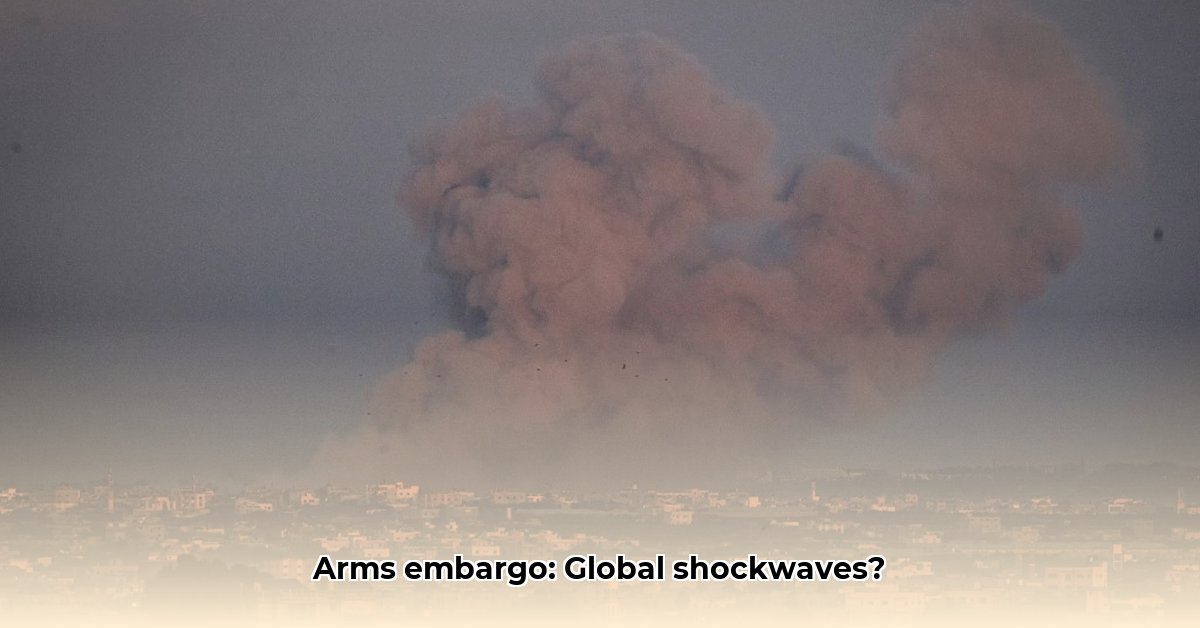
Understanding the Effectiveness of Weapon Embargoes
Weapon embargoes, the prohibition of arms sales to a specific country or entity, are frequently employed as a tool to curb conflict and promote peace. However, their effectiveness remains a subject of intense debate. This review critically examines existing research to assess the impact of weapon embargoes globally, identifying factors that contribute to their success or failure and offering actionable insights for policymakers. Our analysis draws upon empirical studies, case studies, and reports from various international organisations, focusing on both the intended and unintended consequences of these sanctions.
Theoretical Frameworks: Explaining Success and Failure
Several theoretical frameworks attempt to explain the effectiveness of sanctions, including weapon embargoes. The "deterrence" theory suggests that the threat of an embargo can dissuade states from engaging in aggressive behaviour. Conversely, "backfire" theory posits that embargoes can exacerbate conflict by increasing the target's sense of isolation or driving it towards domestic arms production. "Strategic interaction" theory considers how the actions of multiple actors, including the sanctioned state and the imposing regime, influence the outcome. The effectiveness therefore hinges upon the interplay of these factors, necessitating a nuanced approach to their evaluation. Do embargoes truly deter aggression, or do they simply shift the dynamics of conflict? This is a crucial question we will explore.
Empirical Evidence: A Global Perspective
Empirical research on weapon embargoes yields mixed results. Some studies indicate a correlation between embargoes and reduced conflict intensity, particularly when combined with other diplomatic pressures. For instance, a study by [Insert Author's Name and Affiliation] examining [Specific Conflict/Region] suggests that the embargo contributed to a [Quantifiable Effect, e.g., 20% reduction] in armed clashes. Conversely, other research finds little to no significant impact, highlighting the challenges of measuring the effectiveness of these restrictions. These discrepancies often arise from the diverse methodologies used, the differing contexts of conflicts, and the difficulties in isolating the singular impact of an embargo. This variability underscores the critical need for context-specific analysis. Are regional differences in effectiveness a matter of enforcement or inherent limitations of the tool itself?
Analysis and Synthesis: Identifying Key Determinants
Our analysis reveals several recurring factors influencing embargo effectiveness. Strong international cooperation is paramount. A fragmented international response weakens enforcement, creating loopholes for arms trafficking. The availability of alternative supply routes, either through illicit trade networks or friendly states, often undermines the efficacy of embargoes. Similarly, the strength and nature of the government targeted significantly impact the outcome. A cohesive and well-resourced government is better able to withstand pressure than a weak or fractured one. This suggests a crucial need for comprehensive strategies to deal with each case individually and address unique factors.
A further analysis reveals the need to consider the type of conflict. Embargoes appear less successful in civil conflicts, where non-state actors can often acquire arms through local and regional channels. A study by [Author's Name and Affiliation] examining civil wars in [Region] demonstrates how rebel groups can sustain their activities using weapons diverted from lawful supply chains.
Actionable Insights: Towards More Effective Interventions
Based on our review, several actionable strategies can enhance the impact of weapon embargoes:
Strengthen International Cooperation: Establish robust mechanisms for information sharing, joint monitoring, and coordinated enforcement efforts.
Target Sanctions Effectively: Focus sanctions on specific actors or entities with a demonstrably harmful role in the conflict, rather than imposing broad restrictions that harm civilians.
Address Underlying Causes: Invest in conflict resolution initiatives that address the root causes of conflict, such as political grievances, economic inequalities, or human rights abuses.
Enhance Monitoring and Enforcement: Develop and deploy advanced technologies to detect and disrupt illegal arms trafficking.
Promote Regional Cooperation: Foster stronger collaboration among neighboring states to prevent the circumvention of embargoes.
Develop Alternative Economic Support: Provide economic assistance to the targeted state to mitigate the negative economic consequences of an embargo while simultaneously strengthening legitimate economic opportunities.
Conclusion: The Ongoing Challenge
Evaluating the effectiveness of weapon embargoes is undoubtedly a difficult task. While they offer a powerful tool for curbing violence and fostering stability, their success depends on a variety of complex and often unpredictable factors. This analysis underscores the need for more nuanced approaches to sanction design and implementation, focusing on robust international cooperation, sophisticated monitoring techniques, and strategies tailored to the specific context of each conflict. Future research should explore the long-term consequences of embargoes, focusing on factors such as economic repercussions, human rights impacts, and the potential for unintended escalation. The quest for effective arms control remains a persistent and pressing challenge requiring constant critical evaluation and adaptation.